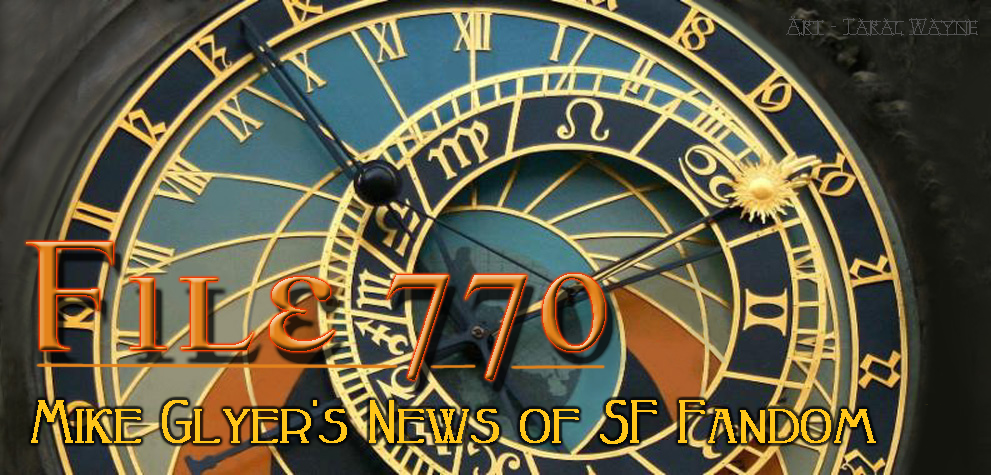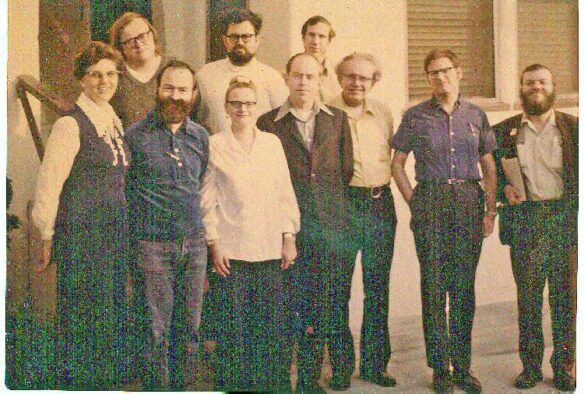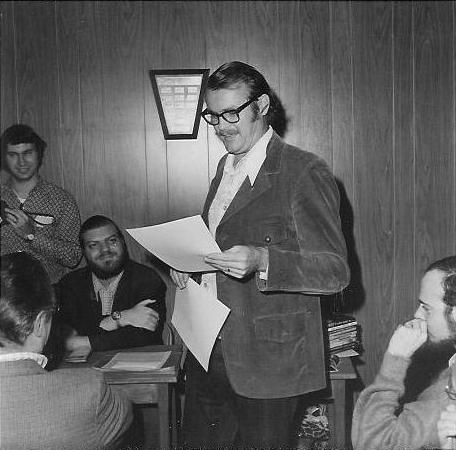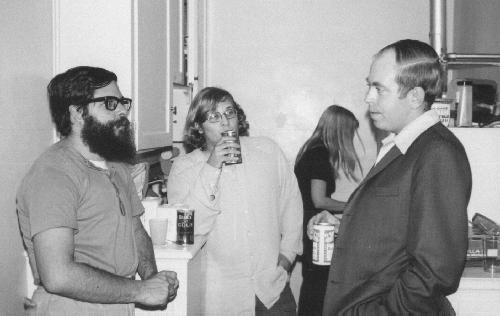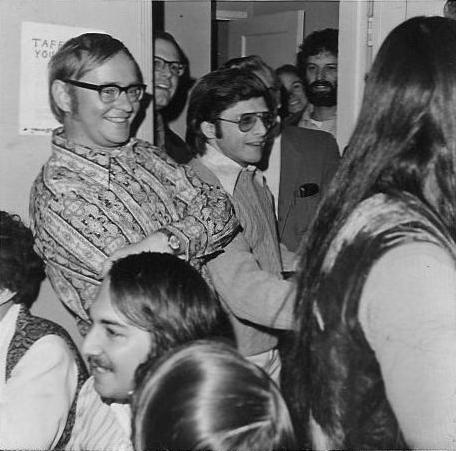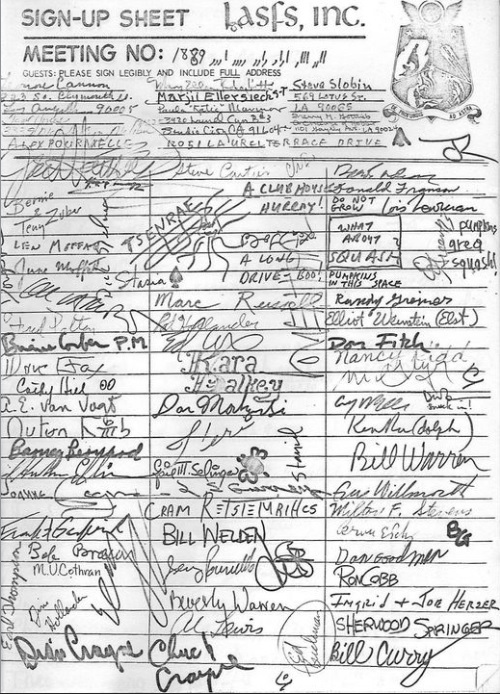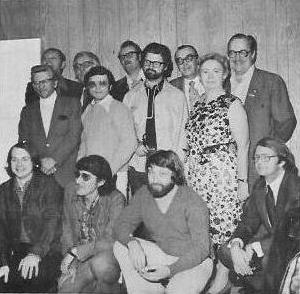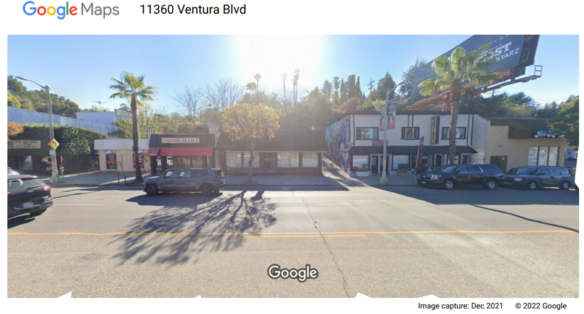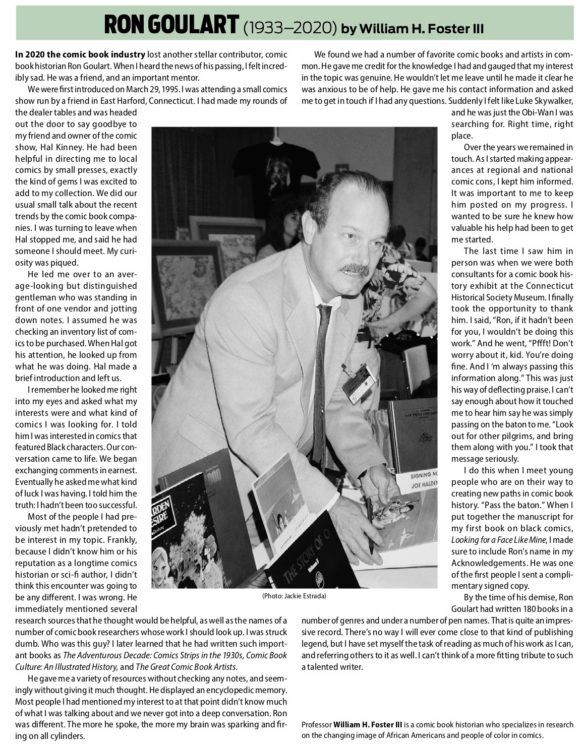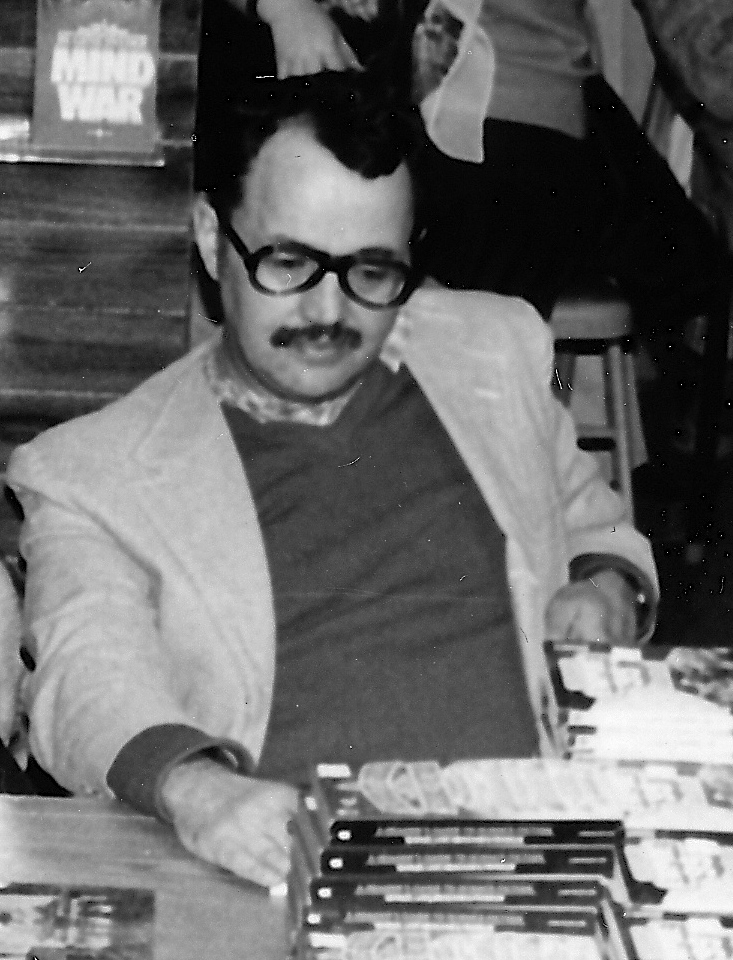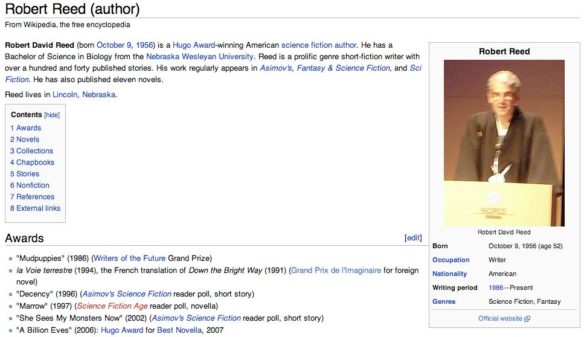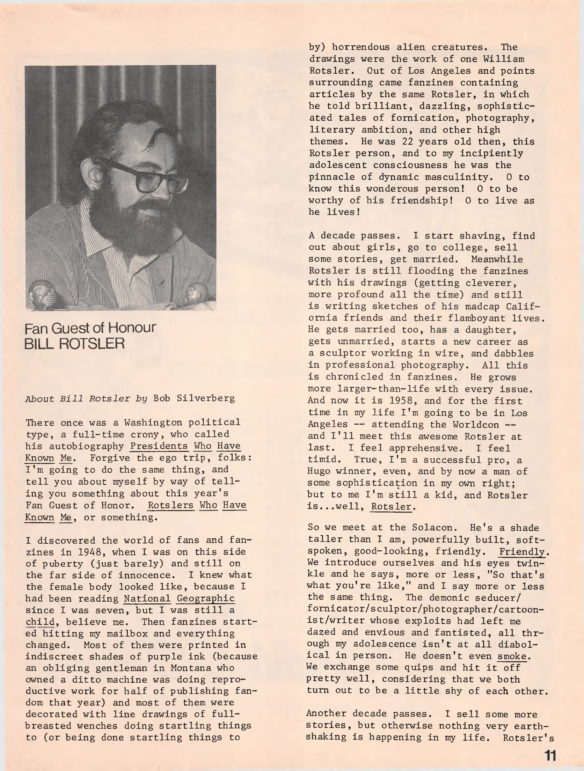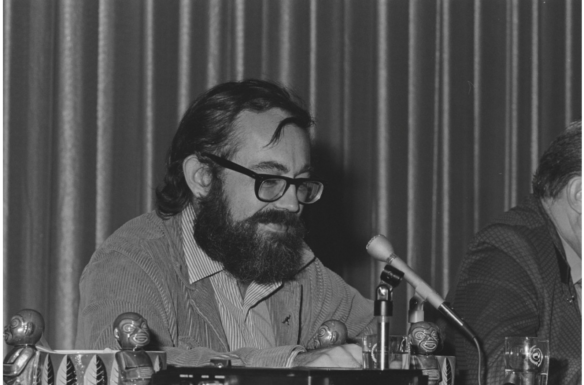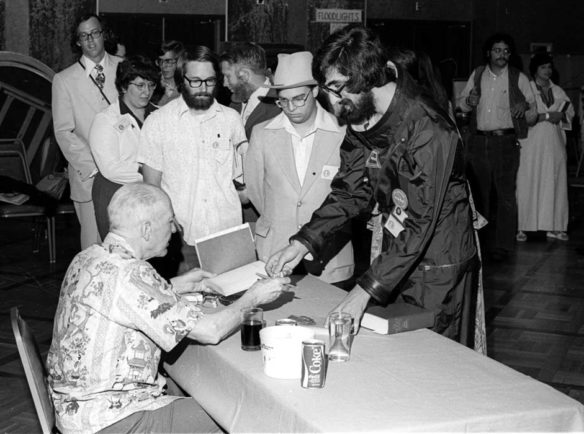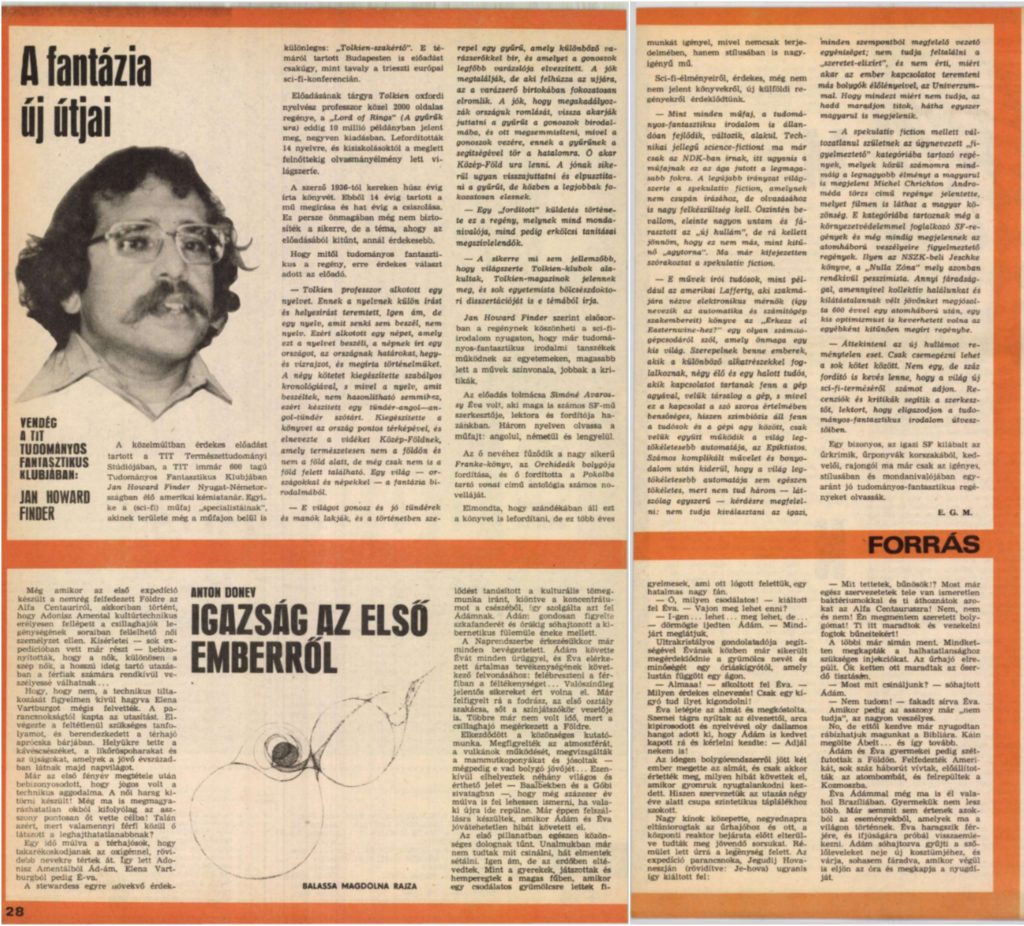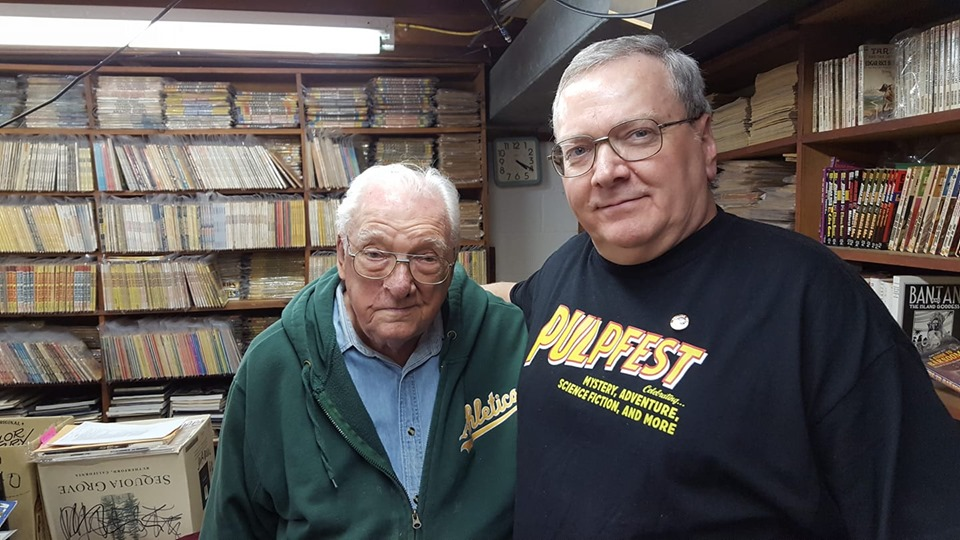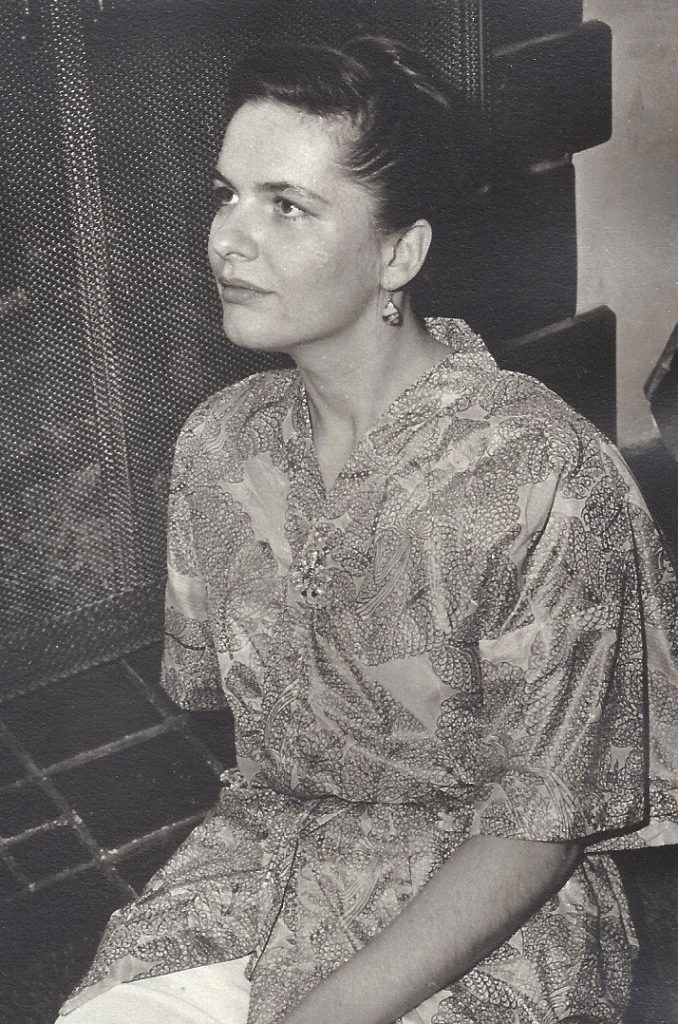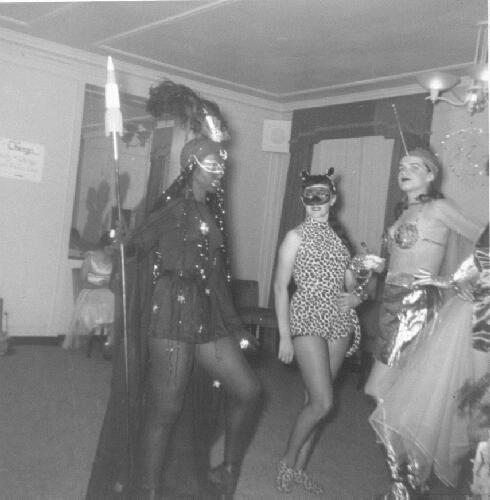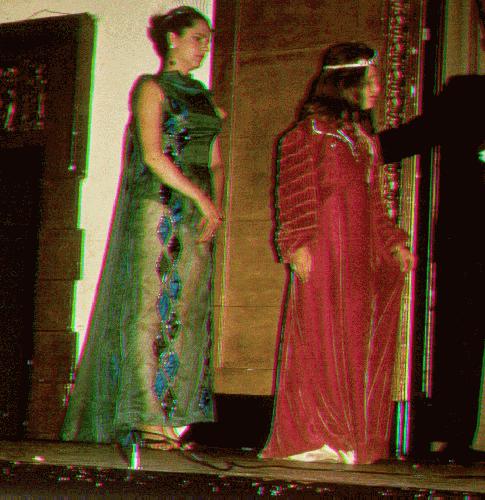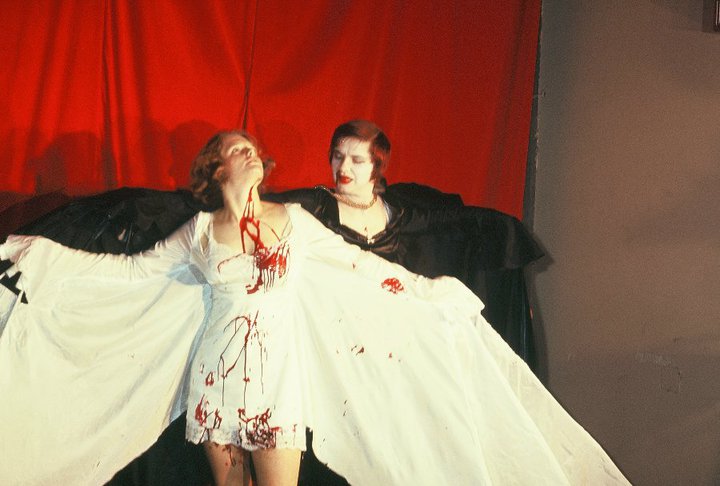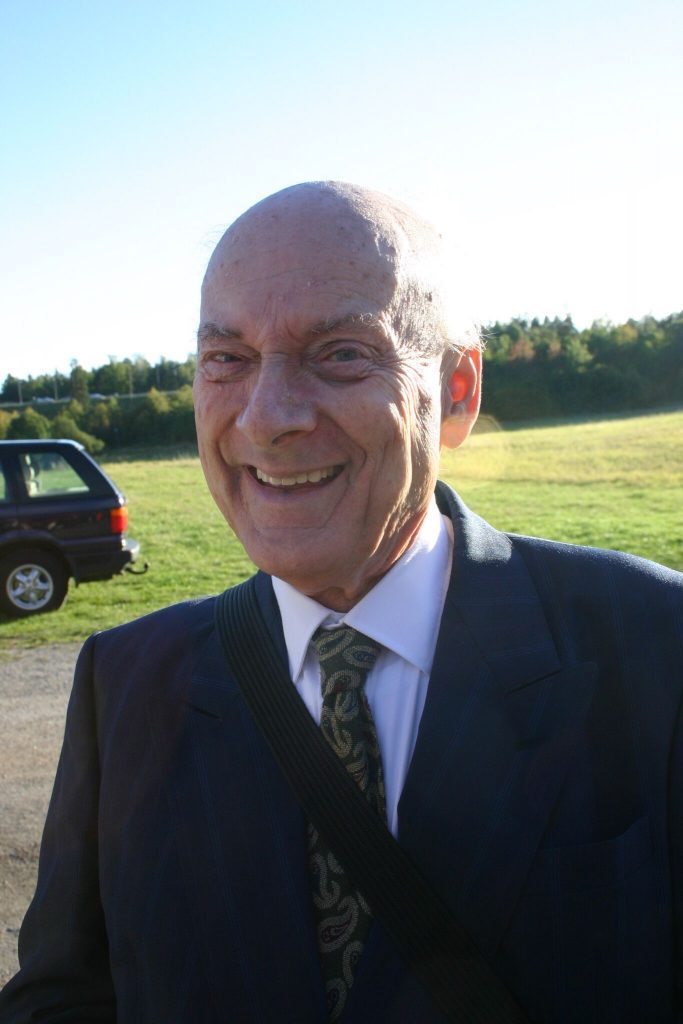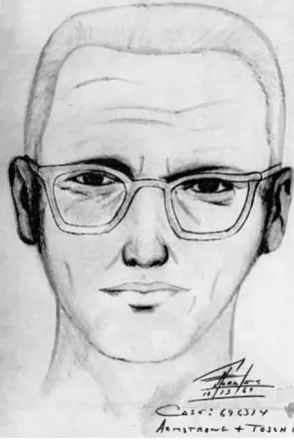
By Rich Lynch and Guy H. Lillian III: It’s fascinating what you can find in old fanzines. They really are a treasure trove of historical information and bravo to Fanac.org for creating a digital archive which makes these decades-old fan materials available online for all of us to marvel at. Fanzines have documented not only things that happened within science fiction fandom itself but also stuff about how fandom has had crossovers with the quote-unquote real world.
A good and perhaps startling example of this can be found in Don Markstein’s Timebinders I, a mini-history of the first 49 mailings of the Southern Fandom Press Alliance. SFPA is an amateur press association that came into existence in 1961 and during its first two decades included many prominent fans in its membership. Two of them, Joe Staton and William Gibson, went on to find professional fame and fortune as an artist and an author. But there was one other SFPA member who has achieved fame of a different and more notorious kind. His name was Paul Doerr.
He was in SFPA very briefly and is listed on the membership roster only for mailing 39 (January 1971). And he has a somewhat unusual distinction. Markstein was the Official Editor for that mailing and as he described in Timebinders I:
One of the five new members was one Paul Doerr, who performed the almost (but not quite) unprecedented act of appearing on the SFPA roster without once, ever, contributing. He accomplished this remarkable feat by sending in 21 copies of a genzine, Unknown, just before he found out that the copy requirement for the 39th Mailing had been raised to 23. I wrote him immediately to tell him that he needed two more copies, so he sent them along – but they didn’t arrive until after the deadline, when the mailing was already out. Meanwhile, the roster had filled and I’d upped the copy requirement to its old level, 25. He dutifully sent two more, but meanwhile, I found out that the zine had had distribution long before the deadline for the 39th, so I couldn’t accept it as required activity. And I told him so. He wrote back irately that it had been new when he sent it, even tho it was distributed before the deadline, and that I should have asked the members to vote on the matter. I didn’t bother to answer. I don’t think he ever caught on that not all apas are as incredibly lax about activity requirements as FAPA. I threw him out as of the 40th Mailing and just kept the 25 zines around. About a year later, I gave away as many copies as I could (not bloody many) and threw the rest away.
But that little episode isn’t what made Paul Doerr notorious. Nope, not at all – it’s for something much, much bigger than that. He’s become one of the prime suspects for being the Zodiac Killer.
It’s been described as “the most famous unsolved murder case in American history.” In 1968 and 1969, five serial killings happened in the San Francisco Bay Area. During the spree, the killer, who referred to himself as “Zodiac”, sent taunting notes to regional newspapers. And also four ciphers, two of which still have not yet been cracked. He was never apprehended and even now, more than a half century later, the five murders are still considered as open cases. Over the years there have been many potential suspects but thanks to research by writer Jarrett Kobek (which was described in detail by an article in the September 22, 2022 issue of Los Angeles Magazine), Doerr is now considered as one of the more prime. It was all summarized in a section of the Wikipedia article about the Zodiac Killer:
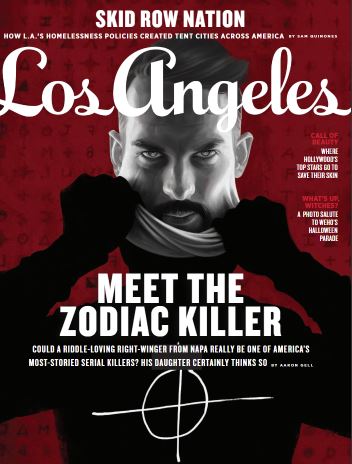
In 2022, novelist Jarrett Kobek published How to Find Zodiac, in which Kobek named Paul Doerr as a suspect. Doerr was a North Bay resident with a post office box in Vallejo, where the first murders took place. Born in 1927, Doerr’s age in 1969 (42) as well as his height (5′ 9″) was consistent with witness estimates. He was an avid fanzine publisher and letter-writer throughout the 1960s and 1970s, and many of his writings exhibit circumstantial parallels with the Zodiac. For example, Doerr was interested in cryptography; in Doerr’s own Tolkien fanzine HOBBITALIA, he published a cipher in Cirth three days after Zodiac sent the Z13 cipher (Kobek in fact argues that the solution to the HOBBITALIA cipher is one of only three possible solutions to Z13). In Doerr’s own fanzine PIONEER, he references the same formula for an ANFO bomb given later by the Zodiac, which Kobek argues was not widely known before the internet and the publication of The Anarchist Cookbook in 1971. In a letter to [the N3F fanzine TIGHTBEAM] in 1970, Doerr advocated using solely 1¢ stamps to spite the U.S. Post Office, a practice the Zodiac employed on some of his letters. Doerr hinted in a 1974 letter to fanzine GREEN EGG that he had previously killed people, and revealed in a different letter that he knew that mail to the [San Francisco] Examiner would be delivered without a street address, just as the Zodiac sent them. Doerr’s daughter read Kobek’s book with the intent of suing for libel, but came away impressed with Kobek’s research, adding in interviews that Doerr had at times been a violent and abusive father. Paul Haynes, a researcher for [the HBO true crime documentary series] I’ll Be Gone in the Dark, called Doerr “the best Zodiac suspect that’s ever surfaced.”
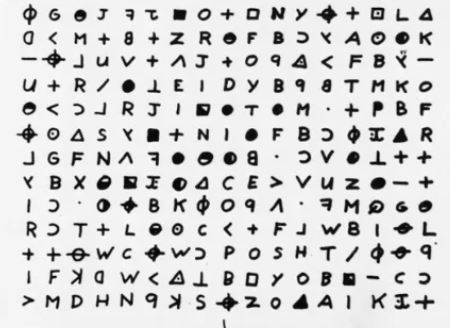
Timebinders I was recently added to the fanac.org archive (it’s so far the only fanzine digitally preserved from SFPA’s 50th mailing) and there’s lots more of fan history interest in it than just the paragraph about Paul Doerr’s ghost membership in the apa. It’s a good read.
And as for Doerr himself, the overall timeline leads to a chilling realization. If he actually was Zodiac (and it should be noted there is at least one other prime suspect besides him) then the five murders occurred prior to his very abbreviated time in SFPA. And not only that, there were other killings that some investigators suspect had been committed by Zodiac and they all happened after Markstein booted him.
A Google search on Doerr’s name, as you might expect, brings up scads of links about the Zodiac Killer mystery. And besides all these there’s also one to findagrave.com, which shows a photo of his headstone (he died in 2007 and is buried in the Sacramento Valley National Cemetery). Doerr had been a military veteran, which had induced one of the two people who commented to write the usual “Thanks for your service.” But the other commenter wrote something that’s much more to the point as far as the Zodiac Killer mystery is concerned: “Did you do it?” Guess we’ll never know for sure.
